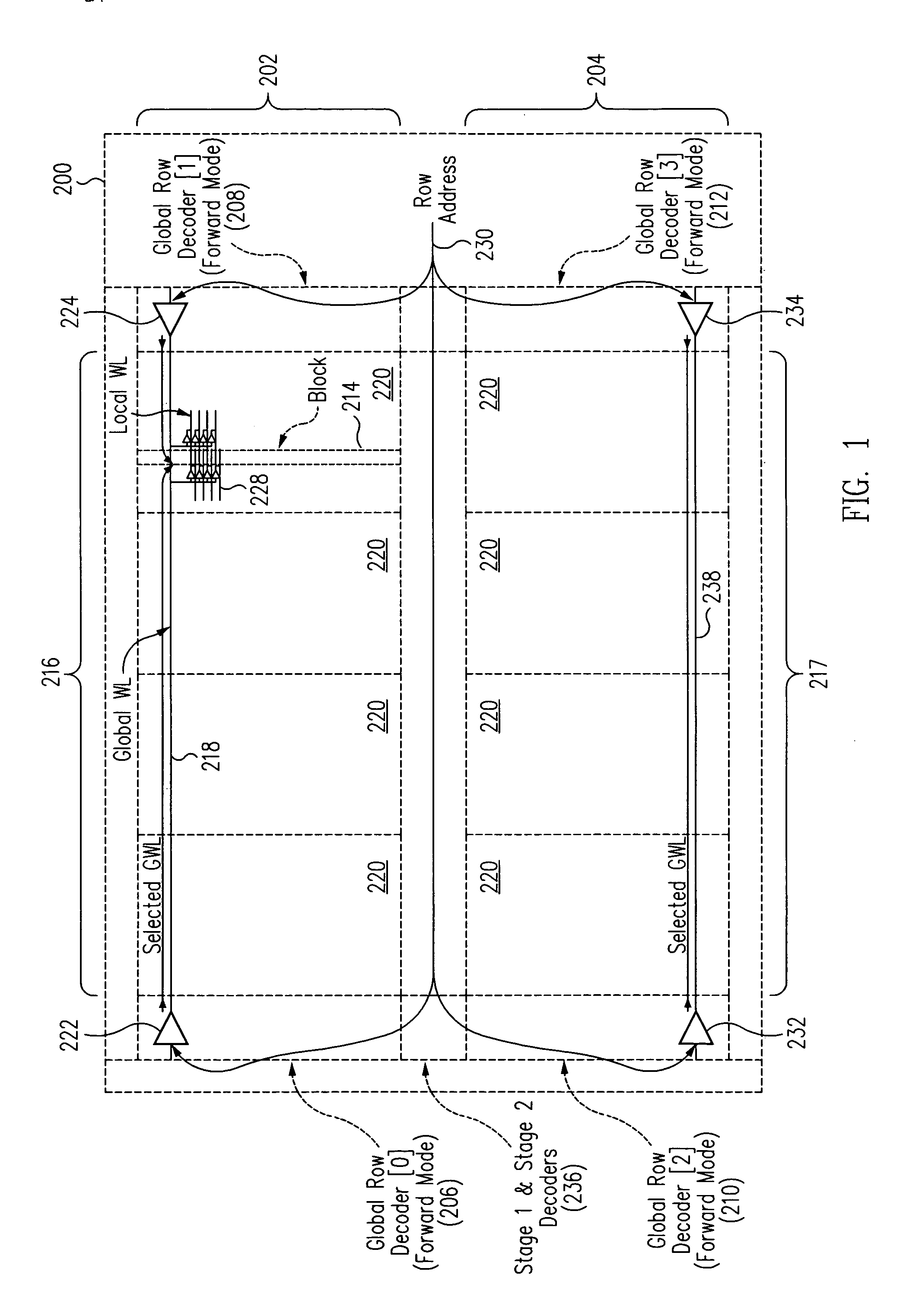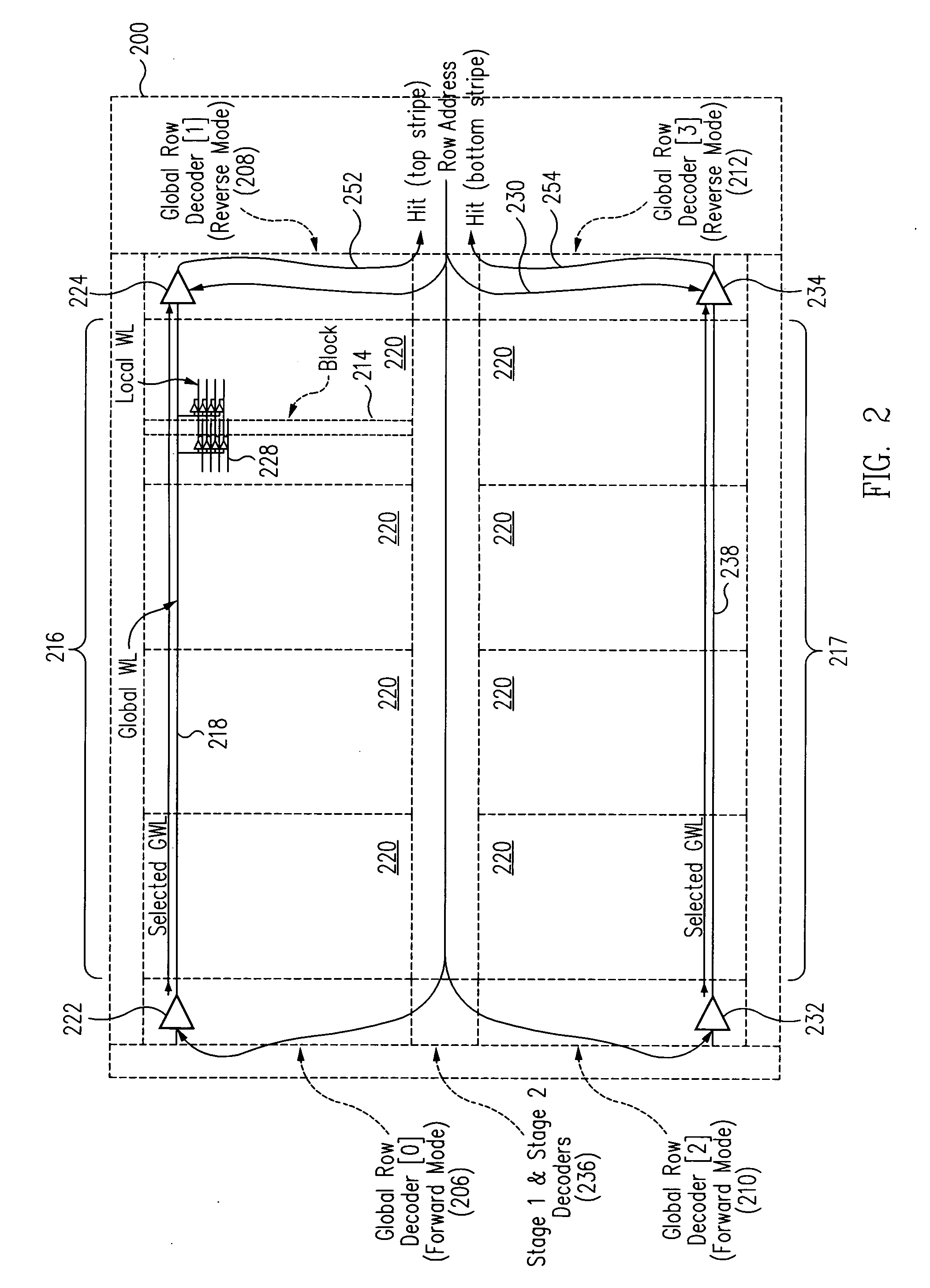Dual-mode decoder circuit, integrated circuit memory array incorporating same, and related methods of operation
a decoder circuit and integrated circuit technology, applied in digital storage, semiconductor/solid-state device details, instruments, etc., can solve the problems of extremely small pitch of difficult to interconnect word lines and bit lines within very dense arrays, and run from one end of an integrated circuit, etc., to achieve short time and short time
- Summary
- Abstract
- Description
- Claims
- Application Information
AI Technical Summary
Benefits of technology
Problems solved by technology
Method used
Image
Examples
Embodiment Construction
)
[0041] Referring now to FIG. 1, an exemplary integrated circuit 200 includes two memory arrays, one organized as part of an upper stripe 202, and the other organized as part of the lower stripe 204. The upper stripe 202 includes a memory array 216, a first dual-mode global word line decoder 206 disposed at the left side of memory array 216, and a second dual-mode global word line decoder 208 disposed at the right side of memory array 216. Both dual-mode decoders 206 and 208 are responsive to row addresses conveyed on row address lines 230.
[0042] The lower stripe 204 includes another memory array 217, a first dual-mode global word line decoder 210 disposed at the left side of memory array 217, and a second dual-mode global word line decoder 212 disposed at the right side of memory array 217. Both dual-mode decoders 210, 212 are also responsive to the row addresses 230.
[0043] In the upper memory array 202, the global word lines traverse across the entire memory array 216. One such ...
PUM
 Login to View More
Login to View More Abstract
Description
Claims
Application Information
 Login to View More
Login to View More - R&D
- Intellectual Property
- Life Sciences
- Materials
- Tech Scout
- Unparalleled Data Quality
- Higher Quality Content
- 60% Fewer Hallucinations
Browse by: Latest US Patents, China's latest patents, Technical Efficacy Thesaurus, Application Domain, Technology Topic, Popular Technical Reports.
© 2025 PatSnap. All rights reserved.Legal|Privacy policy|Modern Slavery Act Transparency Statement|Sitemap|About US| Contact US: help@patsnap.com



